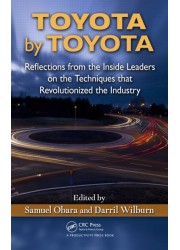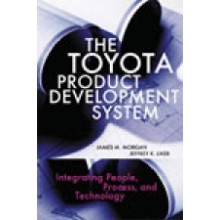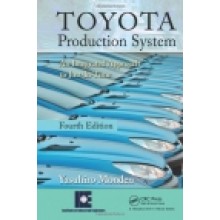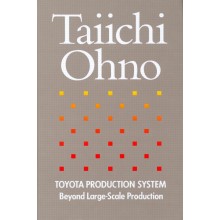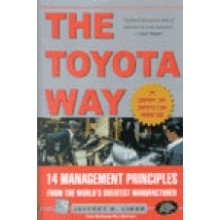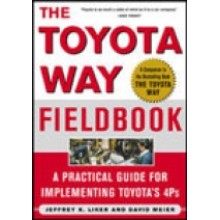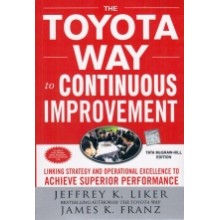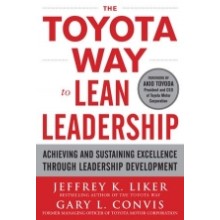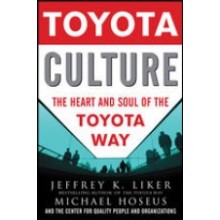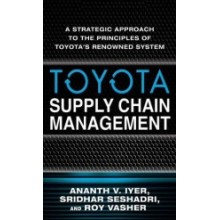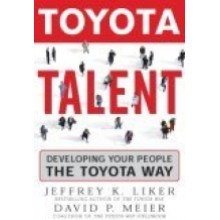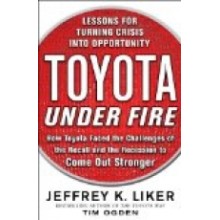Toyota by Toyota: Reflections from the Inside Leaders on the Techniques That Revolutionized the Industry
ISBN: 9781439880753
Author: Samuel Obara, Darril Wilburn
Dispatch Time: 2 - 3 Days
Quantity:
-
Add to Compare
Written by former Toyota associates, Toyota By Toyota: Reflections from the Inside Leaders on the Techniques That Revolutionized the Industry focuses on the purpose of Lean methodologies, techniques, and principles. It compiles more than a century of combined experience from management-level employees who supply little-known insights about the Toyota Production System (TPS)—featuring many who worked directly with Taiichi Ohno.
Table of Contents
Courage, Humility, Kaizen; Darril Wilburn
The Toyota Way 2001
Courage, Humility, Kaizen at the Heart
Teaching Others
Stability and Standardized Work; Gerson Valentim Damiani
Importance of Standard Work
Why Work Using Standards?
Operational Procedures, Work Instructions, and Work and Labor Procedures
How the Work Was Done at Toyota: Standard Work before Technology
How Standard Work Was Done at Toyota after the Introduction of Technology
Factory Layout
Objectives of the Layout
Human Factor
Problems in the Implementation of Standard Work
Where to Place Standard Work Instructions
Jidoka; Renato Eiji Kitazuka with Carlos Moretti
Origins
Jidoka as a Pillar of the Toyota Production System
So, What Is the Purpose of Using Jidoka?
Using Jidoka
Implementation Stages of Jidoka
It Was Too Early
Conclusion
Just-In-Time and Kanban; Carlos Fukamizu
Just-In-Time
Introduction
Introduction of Jidoka and Just-In-Time as the Pillars of TPS
Jidoka
Just-In-Time Manufacturing
Just-In-Time (JIT)
Concept
Total Customer Satisfaction
More Evident Waste in the Manufacturing
Continuous Flow Process (One-Piece Flow) and Pull System
Lean Methodologies for Waste Elimination
Examples
Kaizen (Continuous Improvement)
Kanban as a Technique of JIT
Conclusion
Problem-Solving PDCA; Sammy Obara
Definition
Why Problem Solving Is So Important Along a Lean
Transformation
What Is PDCA?
Do You Really Need a Method?
How and Where to Find Problems
The Mosquitoes Case
How Well Do You Understand the Problem?
Genchi Genbutsu: The Point of Cause
How Well Can You State the Problem?
How Well Do You Understand the Causes?
Doing Well What Does Not Need to Be Done
Project Management
Quick Note on Deadlines
Standardization
Recognition
A Higher Level of Recognition
Yokoten: Spreading the Learning Laterally
What Is Next?
Toyota Kaizen Methods; Art Smalley
Step 1: Discover Improvement Potential
Step 2: Analyze the Current Method
Step 3: Generate Original Ideas
Step 4: Make a Kaizen Plan
Step 5: Implement the Plan
Step 6: Verify the Results
Summary
Kaizen Culture: The Continuous Improvement Engine;Stephen J. Ansuini
The Key Elements of a Kaizen Culture
Visible Sponsorship and Support by Management
Leadership Support
Clear Purpose and Aligned Goals
Evolving Continuous Improvement System
Phase 1: Introduction – Participation Emphasis
Phase 2: Transition – Participant Development
Phase 3: Process Maturation
Summary
Elimination of Waste in Product Design; Patrick Muller
Value Engineering/Value Analysis
Waste in Process Design
Waste in Product Design
Toyota’s Purchasing Philosophy
Fair Competition Based on an Open-Door Policy
Mutual Prosperity Based on Mutual Trust
Abide by the Law
Toyota’s Purchasing Practices
Cost Breakdown
Target Costing, VE/VA, Kaizen
Value Engineering/Value Analysis
History
At Toyota, Suppliers Challenges
VE/VA and FMEA
VE/VA and Marketing
Practical Example
Adapting Lean for Made-to-Order/High-Mix, Low-Volume Organizations; Greg Lane
OSKKK to Learn and Transform
Learning the Processes before Managing Them
Constraints Require More than Quick Fixes
Process Focused, Not Product Focused
Segregating Parts to Manage Differently
Managing in Real-Time Necessitates Other Lean Principles
Proportionally More Indirect Costs Necessitates
Lean Accounting
Failures
Summary
Lean Logistics; Robert Martichenko
Part 1: Purpose + People
Introduction
Purpose
Customer and 3PL Collaboration
People and Planning
Part 2: Process
Logistics Route Design
Pull Replenishment
Velocity and Understanding the Importance of Lead-Time Reduction
Driving Velocity
Manufacturing Plant Integration
Leveled Flow
Trailer Yard Layout and Visual Management
Quality at the Source and Discipline of Process
Lessons Learned and Conclusion
Leading a Kaizen Culture; Bob Plummer
A TPS Symphony
Discovering the Kaizen Culture
Creating and Sustaining the Kaizen Culture in American Factories
Implementing TPS Methods
Back to the Beginning
Leaving GM
Hoshin Kanri; Alistair Norval with Darril Wilburn
What Is Hoshin Kanri?
Why We Need a Strategic Planning System
What Does This Result In?
Countermeasure to Strategic Planning Problems
Hoshin Kanri Enables Organizations to Develop Strategic Plans That Are True North
Tree of Focused Activity
Plan, Do, Check, Act (PDCA)
Management Process
Catchball
Key Thinker
A3
The Power of Hoshin
Summary
Index
Write a review
Your Name:Your Review: Note: HTML is not translated!
Rating: Bad Good
Enter the code in the box below:
Copyright © 2014 Engineering Standards Bureau. All Rights Reserved.
Developed By Zoom Into Web


